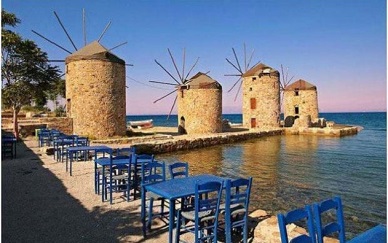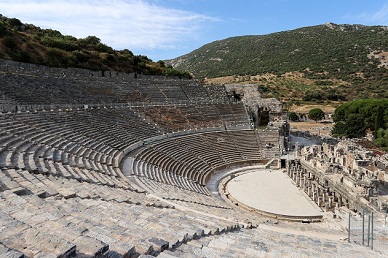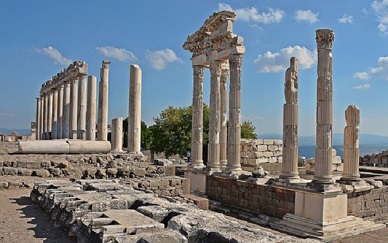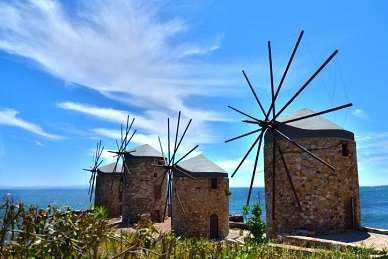Ephesus & Pamukkale
Ephesus, the capital of the ancient city of Anatolia, is an extremely splendid metropolis. This mega ancient city, whose unique architectural monuments have been standing for thousands of years, has entered the World Heritage List. Based on Anatolia's mother goddess (Kybele) tradition, the Temple of Artemis, one of the Seven Wonders of the ancient world, also increases the importance of Ephesus.
BOTH POLITICAL AND COMMERCIAL CENTER
Ephesus, starting from the prehistoric times and throughout the Hellenistic, Roman, Byzantine (Eastern Roman), principalities and Ottoman period, was always inhabited and was a political and commercial center.Ephesus played an important role in science, culture and art throughout its history dating back to 7000 BC, and was one of the most important metropolises in the ancient world. It was a major gateway and a port city between East and West (Asia and Europe). It continued to evolve without losing its position.
The history of excavations in the ancient city, which hosts an average of 1.5 million visitors per year, is approaching 125 years. Ephesus, which has not yet been fully uncovered, continues to bring new dimensions to Anatolian archaeology.
PAMUKKALE (HIERAPOLIS) , THE CITY OF WATER AND FAITH
The ancient city of Hierapolis, 18 km north of the province of Denizli, was founded by Eumenes II, the King of Bergama in the 2nd century BC and it can be said that Telephos, the legendary founder of Bergama, named Hierapolis after his wife, Hiera. The city was continuously destroyed and rebuilt by earthquakes because it was in an earthquake prone area. However, the buildings that are standing today were built after the great earthquake in AD 60 and after that, the city was constructed with a grid plan, taking the appearance of a typical Roman city that had lost its Hellenistic character. After the Roman period, Hierapolis continued to be a very important center in the Byzantine period. The reason Hierapolis was the center of Christianity since the 4th century AD was that St. Philip, one of Jesus ' disciples, was crucified here in AD 80. Kent I.S. After the Byzantine conquest of the 4th century, an octagonal church called Martyrium was built in memory of St. Philip. Therefore, the city gained fame and it got the title “Metropolis”. The city was destroyed by the earthquake in the 7th century AD and lost its identity. It became a small town in the 12th century, then the area came under the control of the Seljuk Sultanate in the 13th century and following the earthquake in the 14 century, it was completely abandoned.
The ancient city had grid plan consisting of two monumental gates and perpendicular streets parallel to the Main Street. The Main Street, which is about 1 km long, divides the city into two and there are arcades, public buildings, shops and workshops on both sides of this street. The necropolis areas outside the city walls and on the north, south and east side of the city are the largest necropolis in Southwest Anatolia. The other significant buildings of the ancient cite are; Bath-Basilica, Latrina, Theater, Ploutonion (a shrine to the Greek god Pluto), Apollon Temple, water canals and The Nymphaeum, churches (St. Philip Martyrium, St. Philip Church) and the antique pool and the baths.
The ancient city of Hierapolis (Pamukkale) whose ruins are mostly from the Roman era, along with the splendid Pamukkale Travertines next to it, was included in the UNESCO World Heritage list as a cultural and natural heritage.
Don't miss the natural wonders of the white travertine. These thermal pools with terraces attract people looking for beauty and health since the Roman era.
Explore two of Turkey’s highlights which are listed in the UNESCO world heritage list.
Ephesus Pamukkale Tours 2 Day Trip
Day 1 - Ephesus
Depart for Ephesus, Drive approximately 2 hours to see the remains of what was once ancient Rome’s capital in Asia Minor. Your first stop will be the ancient city of Ephesus which was the home to over 200,000 people. Visits to Artemis Temple which used to be one of the 7 wonders of ancient world, Ephesus Ancient City, Hadrian Temple, Celcius Library, Theater, Hamams and Old Harbor. Midday, lunch break in a local restaurant and visit the House of the Virgin Mary. (optionel )and Isa Bey Mosque visit Enjoy at see the traditional local handicrafts, Afterwards, drive to Pamukkale. Overnight in Pamukkale hotel.
Day 2 - Pamukkale ( Hierapolis )
After breakfast at the hotel, pick up by the tour guide around 09:00am and join to Pamukkale-Hierapolis Tour. Pamukkale has hot springs and travertines, terraces of carbonate minerals left by the flowing and cooling water. It seems like cotton that’s why it is called ‘Cotton Castle- Pamukkale’ by Turks. Visit to Hierapolis Ancient City as a Unesco World Heritage Site and used to be visited by people to soothe their aliments during the retirement and also die there. As a refreshment, you can walk on terraces or swim in Cleopatra Swimming Pool. (Optional) Midday, lunch break in a local restaurant. End of the tour, transfer to Çeşme Hotels End of our service.
Tour Prices:
- ask for current prices
Included
- Hotel Pick up and Drop off (from Çeşme Hotels)
- Professional Tour Guide
- Transportation by A/C vehicle,
- Entrance Tickets ( Ephesus ,Pamukkale -Hieropolis )
- Dinner,Breakfast ( Open Buffet )
- 1 night hotel accommodation in Pamukkale
- Parking fees for the vehicle.
- Drop-off to your hotel
Excluded
- Drinks ,Lunches
- Extra expenses at the hotel,
- Cleopatra Swimming Pool. (Optional)
- Any Private Expenses
- Optional tips to the drivers and guides
- Virgin Mary. (Optional )





